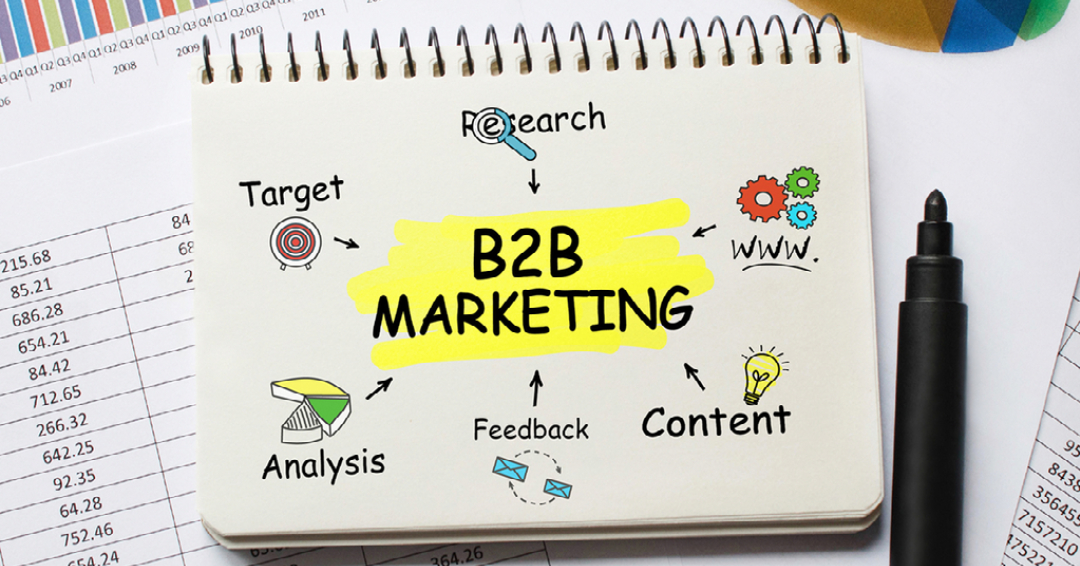What is B2B Marketing?
As the term implies, B2B marketing refers to the marketing by other companies and organizations of goods or services. B2C marketing, which is consumer-oriented, includes many essential contrasts. In general, marketing material in B2B appears to be simpler and more informational than B2C. This is because corporate acquisition decisions are more focused on bottom-line profits than those of customers. Return on investment (ROI) is hardly an issue in an everyday person, but it emphasizes business decision-makers.
How does B2B marketing works?
B2B marketers also sell to purchasing boards with many primary stakeholders in the new world. This provides a dynamic and often complicated environment. Still, with data sources getting better and more reliable, it increases committees’ ability to map out and target customers using specific personal information. It is one of the two main marketing groups and varies significantly from the other main marketing category, i.e., B2C marketing. The first step in the marketing process is to let other businesses know that your company exists and have a product or service that would help their business grow. B2B marketing not only makes businesses more conscious of the brand but also promotes opportunities. Their goal is to convert them into customers and build a valuable long-standing relationship with your brand.
As B2B goods and services are more complex than those intended for customers, long-term partnerships need to be established. Often B2B advertisers use conventional tactics to consolidate these primary ties, such as attending trade shows or hiring a sales force.
Who uses B2B marketing?
Any company that sells to another company uses B2B marketing. It can be used in many ways: subscriptions to software as a service (SaaS), monitoring systems, instruments, products, office supplies, you name it. Many companies come both within the scope of B2B and B2C. In order to help promote its goods or services, any company which wants to sell to other businesses uses B2B marketing. Though not as diverse as all B2C businesses, numerous goods, facilities, and markets are still involved.
Some standard B2B companies are :
Software Companies:
Software enables companies to satisfy and operate their clients more effectively. A solution is available for virtually all business needs via software. It can improve competitiveness by banning social media, encouraging cooperation with project management instruments, or monitoring working hours and costs.
Office suppliers:
Although they do more online than ever before, it is still vital to maintain a good supply of workspaces.
Marketing agency:
Marketing firms appeal to companies to help them make more profits. They have recently focused their attention on digital marketing as more brands are linked. Demand for agencies that create the importance of websites, search results are increased, and e-commerce checkout processes are streamlined.
Bookkeeping and accounting:
Tedious and time-intensive accounting and tax planning are the perfect outsourcing expenditures. If it’s a big team of accountants or just an independent freelancer, they all want to communicate to customers through B2B.
There are a few of many kinds of B2B firms. If you look at how many sectors there are and the tools which they will be using to produce their goods or services, you can easily see the vast scale of the B2B companies. B2B marketing campaigns are intended for any person who has authority or power over purchasing decisions. This will have several names and roles ranging from low-level analysts to the C-suite.
Creating a B2B marketing strategy
Customer rivalry is intense, including publicity. To create a B2B strategy with success, careful preparation, implementation, and management are essential. The strategy or process of B2B businesses stands out in a competitive marketplace. Those steps which you need to take are:
Step 1:
Develop an Overarching Vision: Failure to schedule, plan failure; this truism is forever precise. First, you may want to pick clear and concrete business goals before any decisions are taken. Then set the groundwork for how the B2B marketing campaign is achieving them.
Step 2:
Define your market and customer persona: This is the most crucial step in B2B marketing companies. Although B2C commodities also have a larger and broader audience, B2B products and services are traditionally offers to a small group of consumers who have specific criteria and challenges. The smaller this audience can be, the more you can communicate to them with the related messages directly.
Step 3:
Identify B2B marketing tactics and channels: You will have to figure out how and where you want to meet them after developing strong intelligence around your audience. You should be guided by the information you achieved during the previous phase. It will be best if you have the answers to the following questions about your ideal clients and prospects:
- How do you spend your time online?
- What questions are search engines asking?
- What networks in social media do they prefer?
- How to filler the holes that are left open by your competitors?
- How do they participate in business events?
Step 4:
Create assets and run campaigns: Follow best practices for any platform of your plan. The team’s message needs to spread that is mostly linking to the desired intervention in critical factors for successful campaigns. This can include an innovative approach, helpful ideas, advanced focus, and clear calls for action.
Step 5:
Measure and Improve: This is the continuing process, which keeps you on the right track. In the simplest words, they help you find out why your high-performance content works and why your low performance does not allow you to make better choices about your time and money. Even though you have a well-researched foundation, it involves a lot of guessing to create content and campaigns before you have substantial commitment and conversion data.
What are the types of B2B marketing?
Below we mention some B2B marketing types and channels:
Blogs: Regularly updated blogs give you organic visibility and traffic to your website. Your blog can contain various formats: written copies, infographics, videos, case studies, and more.
Search: Google’s algorithm, which makes SEO best practices an uncomfortable place to operate in, changes as often as the B2B marketing strategy. Recently the emphasis has shifted from keywords and metadata to searcher’s intentions signals.
Social media: They can be a mix of both organic and paid. Social networks enable you to reach and engage where you will involve actively. B2B buyers are increasingly using these channels to investigate prospective buyers.
Whitepapers/eBooks: These downloadable documents may either be gated or ungated as standalone assets containing valuable information. We use them as a method for lead production for B2B.
Email: As the efficiency of spam filters and inbox shocks decreases, email won’t quickly vanish. Some sales and marketing experts use InMail LinkedIn for lead-generation to work around overloaded inboxes.
Videos: We can use this type of content in most of the above categories discussed here (blogs, social media, emails). But it’s worth mentioning since B2B strategies are increasingly valuable.
Best practices:
How do you decide how to succeed in marketing B2B? Here are some proven methods that help your team to make an impact.
Be human:
This may be the biggest mistake in B2B marketing, and it comes from the very name: marketing for companies rather than for individuals. Don’t just know the firms and accounts that you are looking for. But learn just about the people in them and make sure you talk to them about your ads. Yes, business decisions tend to be fair and logical, but that doesn’t mean that you need robotic content and tone.
Focus on targeting:
You serve content and marketing to individuals who are either not interested in or incapable of influencing a purchasing decision. Take the time to determine your audience and segment it. Make messages that directly speak to the particular people you want to see.
Leadership can make an impact:
Research continues to demonstrate that senior decision-makers value this type of content highly by using it to assess suppliers and solutions.
Keep context in mind:
As we stated. Personalization and relevance are critical. You want to speak your client’s language, but that is not always sufficient. You also want to provide content and advertisements that fit where they focus more. For example, shorter videos with fast hooks perform better on social media feeds, while a more extended format is more appropriate for YouTube, presumably. You have to try to adopt the mindset of end-users.
Bottom Line
This blog covers everything on B2B marketing. If you find this blog interesting, then please do read the rest of our blogs too. We at Web Mavens help you develop a realistic B2B marketing plan and implement the right strategies. If you have any queries in this blog or on B2B marketing, then without any hassle, please do contact us. You can also browse our website and check out our services and technologies.




